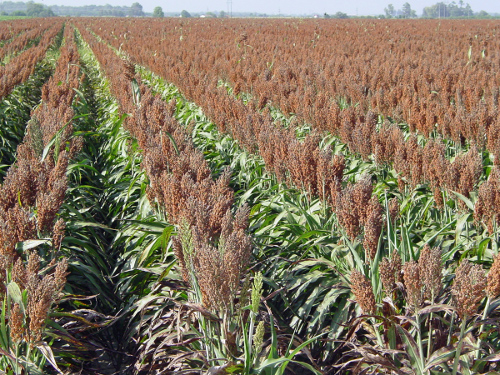


Even in the drought conditions facing many South Dakota farmers this spring, there are crops which can survive, explained Ruth Beck, SDSU Extension agronomy field specialist.
“Drought tolerant crops like grain sorghum or milo will help producers hedge some of their risk,” she said.
Sorghum is a warm season grass, like corn, and is considered to be relatively drought (or heat) tolerant. “While sorghum requires about 6.5 inches of moisture to get to the point where it will produce grain, the production with additional moisture is very efficient, accumulating about 500 pounds of grain or about 9 bushels per acre-inch,” said Beck referencing a document written by her colleague, SDSU Extension plant pathology field specialist, Robert Fanning.
She explained that sorghum’s drought tolerance stems from its large fibrous root system which allows it to extract water from very deep in the soil profile. “It also has the ability to tolerate water stress at any growth stage to some degree,” Beck said.
Another benefit Beck noted is the fact that sorghum does not enter a high water use period during its life cycle until August. “This gives producers a better window to receive some much needed precipitation and rebuild soil moisture,” she said.
Other benefits of Sorghum
Beck noted that in addition to relative drought tolerance, sorghum offers other benefits including the fact that the seed is cheaper than corn seed and the plant is not susceptible to some of the pests and diseases that plague corn such as Goss’s Wilt, corn rootworm or corn borers.
If producers are concerned about crop rotation, Beck said these benefits would allow producers to go back into sorghum residue with corn or soybeans next year. “However, due to the late harvest of sorghum and disease issues, it would not be recommended to seed winter wheat into fields after sorghum,” she said.
If producers are considering a late switch to sorghum, Beck said it will be important to check the labels of any herbicides which have already been applied to fields in question.
“Ensure that no rotation restrictions exist for sorghum on any products which have already been applied. In many cases residual herbicides have already been applied to fields scheduled to be seeded to sorghum since these products require rainfall for activation,” she said.
She added that obtaining adequate moisture to make these products work properly is less likely when they are applied at or after seeding. Post emerge weed control options for warm season volunteer grass control in milo are limited.
Reduce erosion
Another reason that sorghum may be a viable crop option this year is that it can offer producers a chance to get some residue on soils that may not have any now. “This will protect the soil surface from wind and water erosion,” Beck said.
Before planting sorghum, Beck encouraged grower s to seek advice from a crop insurance agent.
To learn more and view the results of the SDSU sorghum variety trials visit iGrow.org
Source: Sorghum is still an option for 2015 | Ag Professional

